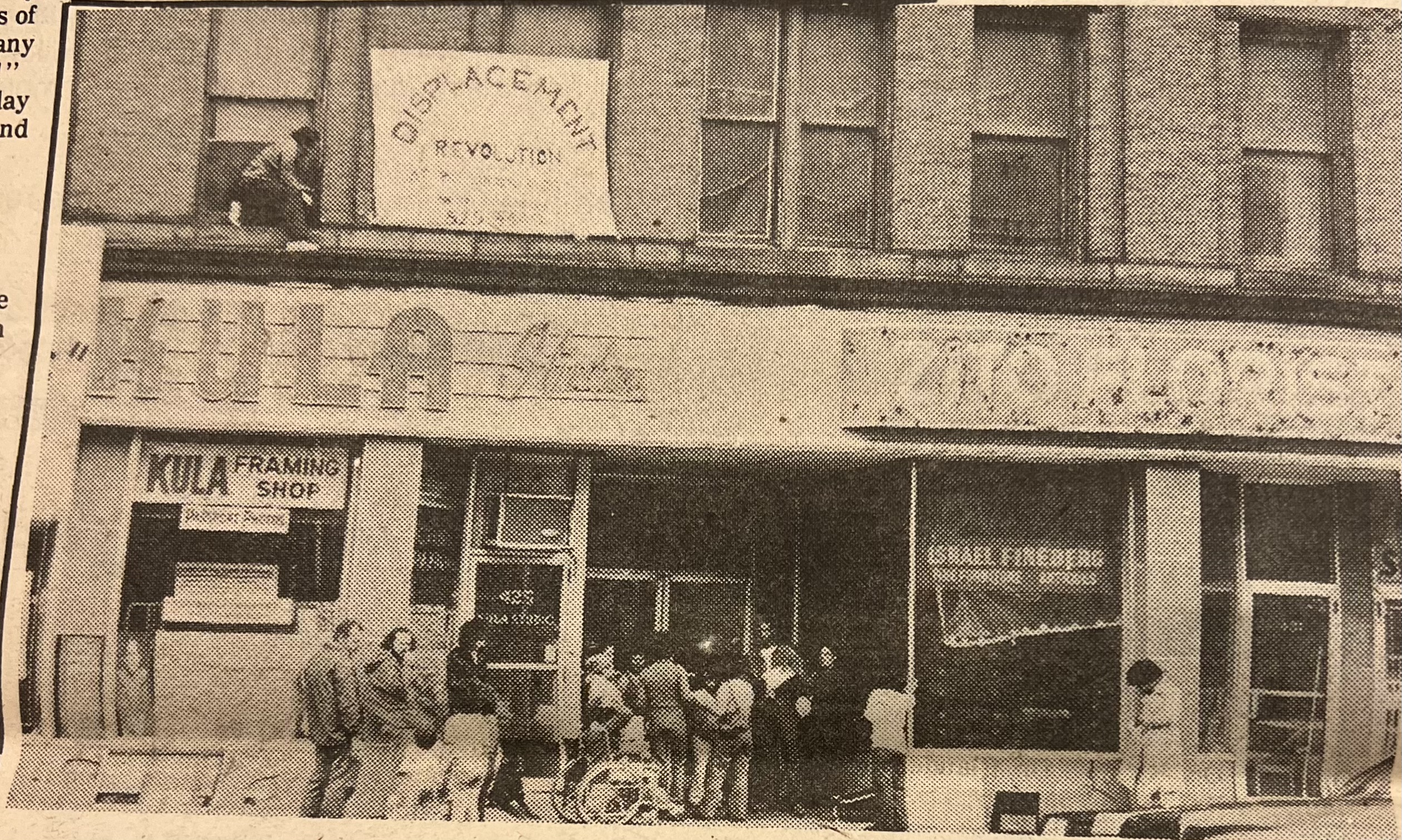Please find the exhibit description below and click Housing Equity Project/Neatline Exhibits/Stories of Resistance to be directed to a spatiotemporal journey through the exhibit.

“Tenant Movement Picture” – Linden Building: Members of Vecinos Unidos hoisted this banner at the Linden Building at 407-435 Main St, Friday Night, May 25 to join tenants in their struggle against eviction by Pat Courtney, “Tenant Movement Picture”
In this exhibit-Stories of Resistance; selected stories tell a tale of hardship, negotiation, achievements, and the complex interplay of influences. Looking through these lenses the housing resistance in Hartford becomes a testament to the community’s unwavering resilience and their ongoing pursuit of improved living conditions.
In the heart of Hartford, members of Vecinos Unidos proudly raise the flag of the “Displacement Revolution” at the Linden Building, on Main Street, coming together to protest against eviction and demand repairs for run-down apartments. The situation becomes more intense as developers express interest in turning the building into luxury apartments prompting tenants to request intervention from the city. However, the tenants in the Linden Building come together, calling the city to take the property from the owner. This shows resistance among struggling tenants, as they stand determined with the mass support of their community members.
Tenants on Forest Street, similarly, are facing the complexities of addressing security, health, and maintenance issues that become more evident, reflecting their dissatisfaction with deteriorating conditions. Bert Rosen, from the Hartford Capital Fund, acknowledges that there have been some improvements, such as the installation of cellar doors and improved outdoor lighting. However, there are still challenges that need to be addressed. These include the need for reinvestment to fix problems and the perceived expense of installing an intercom and buzzer system for locked stairwells. The tenants are expressing their dissatisfaction with the deteriorating maintenance under Invest Management, while IMG claims to have made security improvements. A group of twenty tenants engaged in a negotiation with representatives from Hartford Capital Fund, building owners, and Invest Management Company. They bring up grievances outlined in a letter ranging from safety concerns to health hazards. This negotiation process reflects the resilience of the tenants in addressing issues that affect their living conditions. Their story represents a part of the housing struggles happening in Hartford during this era, where communities navigate complex negotiations to secure better living conditions.
Amidst these challenges, there is a glimmer of hope at 275 Collins Street. Initially marked for demolition local organizations such as Asylum Hill Inc., CHIF and CAHA join forces to facilitate a purchase agreement. Thanks to their efforts the house is spared from demolition. There is a 40-day grace period given for financing approval. The community’s dedication to repairs tells a story of optimism and satisfaction as they work towards improving their neighborhood.
Lastly, outside the borders of Hartford, the impact of Harlem’s rent strikes reaches this city too. The announcement of New York City’s Harlem Plan—aimed at legalizing rent strikes and demanding enforcement of housing codes—resonates with Hartford’s NECAP group. After spending time in New York to explore these strategies they return with a determination to challenge landlords and improve living conditions. It is important to be cautious of the risks that external factors might have on the city’s approach, towards dealing with irresponsible landlords. NECAP’s actions show the risks that the community is willing to take to improve housing conditions.